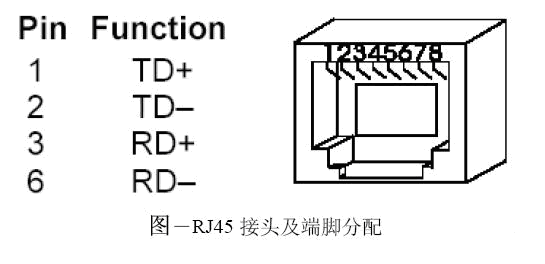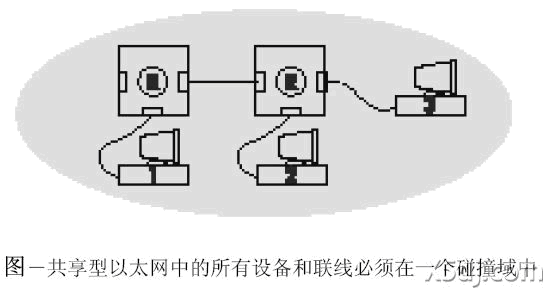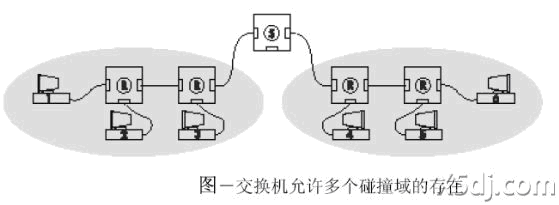First, the topology topology is the arrangement of cables in the network. As we all know, EIA-485 or CAN uses a bus topology. However, in industrial Ethernet, the topology is star or scatter star due to the widespread use of hubs or switches.
Second, the wiring used in industrial Ethernet cable is shielded twisted pair (STP), unshielded twisted pair (UTP), multimode or single mode fiber optic cable.
The 10 Mbps rate does not have too high a requirement for twisted pair cables, while at 100 Mbps, it is recommended to use Category 5 or Category 5 cables.
A pair of fiber optic links is required. The commonly used multimode fiber has a wavelength of 62.5/125μm or 50/125μm. Compared with the inner core of the multimode fiber, the inner core of the single mode fiber is very thin, only about 10 μm. Generally, 10 Mbps uses multimode fiber, and 100 Mbps, single mode, multimode fiber is suitable.
Third, the connector and the connection twisted pair connector RJ-45 is more common, a total of two pairs of lines, one pair for transmission, and the other pair for reception. In the definition of media related interface (MDI), these four signals are identified as RD+, RD-, TD+, TD-, respectively. 
A communication link consists of a DTE (data terminal equipment such as a workstation) and a DCE (data communication equipment such as a repeater or switch). The hub port identification for the MDI-X port indicates that the DTE and DCE can be connected using a straight-through cable. What if two DTEs or two DCEs are connected? You can use the cable crossover method or directly use the uplink port provided by the hub (the cable does not cross).
There are two types of fiber Connectors, ST connectors for 10Mbps or 100Mbps; SC connectors for 100Mbps. Single mode fibers typically use SC connectors. The connection between the DTE and the DCE only needs to follow the TX and RX identifiers of the port.
4. Industrial Ethernet and common commercial Ethernet products What is Industrial Ethernet? Technically, it is compatible with IEEE 802.3, but is designed and packaged to meet the requirements of industrial and commercial applications. Designers at industrial sites want to use Ethernet chips and media found on the market, taking into account the special requirements of the industrial site. The first consideration is high temperature, humidity, and vibration. The second is to see if it can be easily installed in the industrial field control cabinet. The third is the power requirement. The power supplies provided in many control cabinets are low voltage AC or DC. Wall-mounted power supplies sometimes cannot be adapted. Electromagnetic compatibility (EMC) requirements vary with industrial environment requirements for EMI (industrial anti-interference) and ESD (industrial seismic). The safety standards on site are completely different from those in the office. Sometimes the rating of a harsh environment is required. The factory may use industrial control cabinet standards and the building systems often use smoke standards. Obviously low-cost commercial Ethernet hubs and switches cannot meet these requirements.
V. Speed ​​and Distance Discuss the distance of the shared Ethernet. The concept of Collision Domain cannot be ignored. 
Media access for shared Ethernet or half-duplex Ethernet is determined by Carrier Sense Multiple Access/Collision Detection (CSMA/CD). In the half-duplex communication mode, sending and receiving cannot be performed at the same time, otherwise the data will collide. Before the site is sent, the first thing to look at is whether there is a free channel. When sending, the site will listen for a while, ensuring that no other sites are transmitting synchronously during this time, and finally the station sends successfully. Conversely, in the event of a collision, the source station sends a blocking signal to enhance the collision. After the contention of the competing site is delayed (the delay time is determined by the algorithm, it is random) retry. Under this mechanism, all sites and all hubs must be in the same collision domain.
For industrial Ethernet, 10Mbps and 100Mbps are the most commonly used. In 10Mbps, all Ethernet networks with twisted pairs have two concepts related to distance, namely segment and network Diameter. The former refers to the distance between two devices (hubs, switches, or hosts), and the latter refers to the distance between the two most remote devices in the network. Regardless of the 10Mbps or 100Mbps network, the network segment's maximum distance cannot exceed 100 meters. Considering network extensions, the most useful rule is the 5-4-3 rule (for 10Mbps repeaters only). The content of the rule is as follows: A network has up to five network segments, four repeaters, and no more than three hybrid network segments. The hybrid network segment refers to the coaxial bus segment (deprecated). Since the maximum distance of the twisted pair network segment is 100 meters, the maximum network (network range) is 500 meters.
The farthest distance of the fiber network segment can reach 2 kilometers, but the IEEE802.3 standard stipulates that the fiber can be used, the maximum number of cascades cannot exceed three, and the end of the network needs to use twisted pair, and the middle two are fiber network segments and ensure Each segment does not exceed 1 km. In this way, the length of the entire fiber segment is limited to 2 kilometers.
The 5-4-3 rule is not applicable to 100Mbps. A 100Mbps switch is recommended.
Sixth, hub and switch relay hub (hub)
A hub is a basic device that constitutes an Ethernet topology. It is a multi-port device with four, eight, and twelve ports, which can be cascaded to form a distributed star topology.
The hubs are compliant with the IEEE802.3 relay unit requirements. These requirements include preamble generation, symmetry, and amplitude compensation. The repeater must retime the signal so that signal jitter caused by the transceiver and cable does not accumulate when multi-segment propagation. These devices can detect incomplete packets and collisions and generate a blocking signal. They also automatically isolate the problematic ports to keep the network working.
Another series of interface adapters are interface adapters, sometimes called transceivers. They turn one medium into another. The most important conversion is twisted pair to fiber conversion. Since many hubs do not have fiber ports, interface adapters are used to support fiber optic applications in the network. These devices are transparent in the network. The port does not store frames and does not detect collisions, but simply converts one medium to a compatible signal at the other end. Switching hub (switch)
Switching hubs can replace relay hubs and improve network performance. Unlike a physical layer device-relay hub, a switched hub is actually a bridge that connects two data links, which means that the collision domain is terminated at each switch port. Therefore, the addition of the switch extends the geographical scope of the network, and the cascade switch can implement the network expansion switch on a large scale more complex than the relay type hub. The twisted pair port automatically negotiates with the attached port (10Mbps or 100Mbps). The flow control function is also negotiated. The full-duplex network segment uses the PAUSE scheme, and the half-duplex network segment usually uses the backpressure scheme. After the switch reads a complete frame and looks at its source address, it can find out the port location of the connected Ethernet device. The switch then generates a port address table and maintains the contents of the table. From this point on, network communication is limited to the ports associated with this transfer. Since the synchronous transfer can be implemented on these ports without any operation, the throughput of the network is improved. The contents of the table are automatically refreshed based on changes in the connection information.
If the information received by a port needs to be broadcast, group sent, or the address sent is unknown, the switch will automatically send the information to all ports.
Unlike a relay hub, there are multiple collision domains, and each collision domain must follow the above rules. 
The trunk hub can be connected to the switch port. If there are switches in the network, the twisted pair network segment remains 100 meters, but there is no limit to the cascade. Before using the fiber, you must first indicate that it is half and full duplex.
The comparison between the relay hub and the switching hub is obvious. The performance of the switch is better than that of the hub, but the advantage of the hub is that it is easy to understand that the data communication can be observed through the network analyzer on any one port. The switch must implement a broadcast sender on a port to measure. As a bridge, the switch stores and forwards the entire data frame and causes data delay. The hub receives no signal delay from the network signal. Switch cascading also adds latency, so hubs and switches have their own applications in Industrial Ethernet.
Seven, half-duplex, full-duplex and half-duplex means that the transmission and reception of the same media is asynchronous. In contrast, full duplex has separate transmit and receive paths. Full-duplex links are the key to extending Fast Ethernet (100Mbps). A full-duplex link network segment cannot exceed two devices, and can be a network card or switch port. Note: It is not a relay hub port and the hub does not have full duplex mode. This is because the hub is part of the collision domain and it enhances the collisions received by other ports. Only two network cards can implement full-duplex communication. For full-duplex mode when there are more than two network cards, the switch must be considered.
10BASE-T and 10BASE-FL have separate transmit and receive paths, and full duplex can be performed depending on the complexity of the network card or switch port. If these interfaces are configured in half-duplex mode, the synchronous detection of receiving and sending will trigger the collision detection. The same interface is set to full duplex, and collision detection is disabled because full duplex does not follow the shared CSMA/CD rules.
The configuration of the full duplex link is correct. When the site is configured in full-duplex mode, the port of the site or switching hub sends frames in a manner that ignores the CSMA/CD protocol. If the other end is set in half-duplex mode, it will detect the collision and cause other problems, such as CRC error, the speed of the network decreases, and the advantage of Fast Ethernet disappears.
As mentioned earlier, the network range at 100 Mbps has shrunk due to collisions. For twisted pair segments and switch ports, the longest distance of the segment is #p#page title #e#100 meters (within the collision domain). The problem is that on a fiber optic port, the length of the segment is 2 kilometers for multimode fibers and 15 kilometers for single mode fibers. In the half-duplex mode, it is limited by the collision domain, and the network segment distance is 412 meters. Therefore, only in full-duplex mode (CSMA/CA is ignored), the extension of the fiber segment can reach its limit.
In Fast Ethernet mode, switch technology is recommended. For fiber ports under Fast Ethernet, full duplex is recommended.
Auto-Negotiation With Fast Ethernet using a wide range of wiring rules similar to traditional Ethernet, IEEE802.3u recommends auto-configuration of Fast Ethernet, allowing legacy Ethernet ports to work with other Fast Ethernet ports. This configuration protocol is based on the National Semiconductor's NWay standard. The twisted pair link automatically performs speed matching to facilitate data communication. This solution is suitable for twisted pair links. The condition of the fiber is different. Although fiber has a very important position in the history of Ethernet development. However, the speed of the two fiber-optic devices cannot be auto-negotiated because the 10BASE-FL device operates at 850 nm and the 100BASE-FX operates at 1300 nm. The two cannot interoperate. However, for auto-negotiation protocols, auto-negotiation between two fiber-optic devices is possible (if there is no problem with the communication). Aware of this, the new 100BASE-SX standard enables 850nm fiber to operate at 10Mbps or 100Mbps. The distance of the network segment at 100Mbps is 300 meters. Therefore, please pay attention when installing. The rate of the fiber is usually fixed and no negotiation is implemented. The auto-negotiation protocol was successful on the twisted pair link. The advantage of auto-negotiation is that it eliminates the need for manual setup by the user, and the device itself determines the level of skill. The level is as follows: 1000BASE-T full duplex
1000BASE-T
100BASE-T2 full duplex
100BASE-TX full duplex
Power cord can be used in wide range of industries. Home appliances, charging equipment, lighting, Gym appliance, computer, tool, pump, compressor, medical equipment, and so on. All products which are driven by electricity need a power cord.DC (direct Current) power cord is used to the applicance with lower voltage mostly, so safety requirement is less stringent.
DC Power Cord, power cable, DC cable, power connector
ETOP WIREHARNESS LIMITED , https://www.oemmoldedcables.com